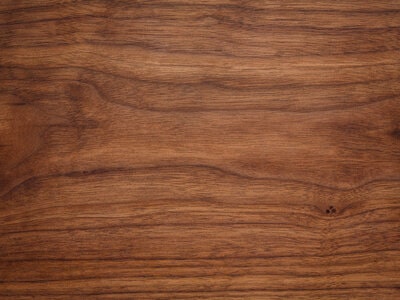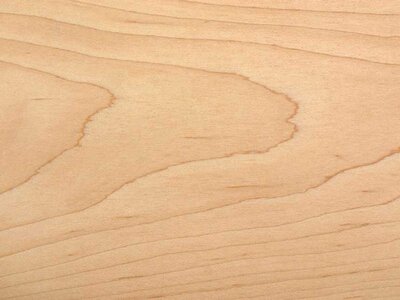Walnut vs Maple (Which is the Best? | Pros & Cons)
Today we have another wood comparison: Walnut vs Maple. Let’s dive in and discover together the differences, the pros and cons of these type of woods and see which one is the best.
At the end of this article I can guarantee you that you will get the best info so you can make a choice when it comes to these two types of wood.
Walnut Wood
Walnut wood is considered one of the best woods, especially in Europe. They have very characteristic and appreciated tones and grain . In addition, it is very easy to work with and supports any type of finish very well.
It is a very heterogeneous species, with at least 30 types of walnut wood, all of them with their particularities. Perhaps the most popular is the European walnut, although there are also several kinds of American walnut with a special presence in the United States, and the tropical walnut typical of Central America and northern South America also stands out.
The latter are somewhat lighter than European walnut. The color of the wood is very similar, the tropical one somewhat darker.
Walnut can reach up to 30 meters high and 4 meters in diameter. Its fruit is the walnut, which is why it is also well known.
Maple Wood
Maple or maple wood is one of the most versatile that exists, not only due to the number of uses of a wood of this quality, but also because maple syrup is obtained from it, which is very useful. widespread in the Anglo-Saxon area. Also maple ash to make soaps and is even part of the emblem of several American states.
There are more than 20 different species of this tree, the vast majority located in North America, so making a generalization is difficult. We will basically talk about two types of maple wood with very different characteristics and that include several species with different variants.
Hard maple , which we find especially in the north of the United States and southern Canada and the soft maple that grows a little further south and that needs more favorable land next to rivers or lakes. Hard maple, from which maple syrup is actually made, is denser and stronger, and is used for the most demanding uses.
Walnut vs Maple : Comparison Table
| Parameters | Maple | Walnut |
|---|---|---|
| Appearance | Maple wood has a light color, ranging from almost white to pinkish yellow, a color that it manages to preserve over time. | Walnut wood color range from light brown to reddish until some species reach a dark brown color. The sapwood is usually grayish or yellow in color. |
| Durability | Moderate. Durable against fungi, susceptible to insect attack. | Medium resistant to rot. Susceptible to attack by some insects, among which the moth stands out. |
| Workability | Fair to good. Can be worked well with different tools from turning to milling, from drilling to cutting. | It offers great elasticity and excellent qualities for machining, gluing, screwing, nailing, bending and in all kinds of finishes. You can work with walnut, both manually and with machinery. |
| Density | Semi-heavy wood, with a density of 700 kg / m3 (Hard Maple Wood) and 590 kg / m3 (Soft Maple Wood). | Semi-heavy wood, density around 650 kg / m3. The American walnut drops to 610 kg / m3. |
| Drying | Very fast drying but must done with care. | Good, but must be done slowly to prevent cracks. |
| Suitability for finishing | Very good especially for painting and varnishing. | Good, from sanding to painting and polishing. Walnut can be finished very well. |
Walnut vs Maple : Color
Walnut Color

Walnut sapwood is ocher yellow in color in contrast to the light brown to dark brown heartwood. Its wood has a special shine and its grain is very pronounced, which makes it a highly valued wood for joinery work.
Walnut wood color can vary from light gray to dark brown with a red or purple tinge. The walnut grain is very lively with pronounced structure, which can be striped, flamed or cloudy. When cut diagonally, the walnut wood creates delicate tongue-shaped patterns in the grain.
Its characteristic color, between reddish and dark brown, make it distinctive .This is also affected by the region where the tree grows. Even a single tree can have a wide range of color in the wood.
Walnut wood color depends from species to species and on the location: American walnut is called “Black Walnut” in trade and is darker and more uniformly colored than European walnut. When exposed to sunlight, walnut darkens considerably
The pores can be seen in the surface of walnut wood and the wood fibers can run irregularly. Walnut can be supplied without steam or with steam to darken the sapwood.
Maple Color

Maple wood has a creamy white sapwood color with a slight reddish brown heartwood. The amount of dark brown heartwood can vary significantly depending on the region of growth.
Both the sapwood and the heartwood of maple and walnut wood have similar colors. The wood has a fine and closed texture, and the grain is generally straight, but it is also possible that it has wavy, violin-shaped and knotted designs.
This differs depending on the type of maple wood in its color. The sycamore maple is the lightest type of wood, but it turns yellow over time.
The Norway maple varies in color between yellowish and sometimes slightly gray tones, and the field maple has a reddish color compared to American and Canadian maple wood which is generally yellowish-brown and significantly darker than European maple wood.
The color makes it easy to differentiate between the three most important species. The sycamore maple is the lightest of the wood types and almost white, but with increasing age of the wood it begins to turn yellow, as is the case with all maple types.
The Norway maple ranges in color between yellowish and sometimes slightly gray tones, while the field maple usually has significantly more reddish tones, which are easy to recognize.
Walnut vs Maple : Hardness
Walnut is a hard wood and has very characteristic veins. Above all, the European walnut variety is more pronounced and forms patterns, the American walnut variety being the most homogeneous in its veins. It has a high cost, and in some cases depending on the veins it can reach very high prices.
Black walnut is a relatively hard wood, but it molds well. It is susceptible to a fine polish. The sapwood is wide, which makes it a wood with considerable loss. It is available in various thicknesses and is steamed before drying to blend dark colored areas and light colored areas. It is not recommended to use it for outdoor use.
It is considered a heavy or semi-heavy wood. Walnut density can reach 650Kg / m³ which is higher than the Maple wood. In the case of American walnut, its density can be lowered to 610 Kg / m³ . It has a density of 620 kg / cubic meter, being considered a heavy wood.
It is a wood that offers great resistance to the passage of time and stability to changes in temperature and the degree of humidity, especially its heartwood (central part of the trunk). Less resistant, for example, to some insects such as moths. However, its drying is very slow and this can be a problem.
Maple Hardness
At a density of 590 kg / m³, the sycamore maple is slightly lighter than the Walnut Wood. Norway maple, which has a kiln density of 620 kg / m³ has a fine-pored wood with a high density and toughness. Comparatively low in weight, it is practical to use and versatile. It is one of the hardwoods that does not shrink much and has a very high resistance to abrasion.
It is a hard and medium-weight wood therefore perfectly suited for everyday use. Slightly wavy grain, fine and homogeneous grains, maple is particularly sensitive to temperature contrasts, so it is recommended not to install a heat source nearby. Its mechanical characteristics are similar to those of oak but maple provides a better finish.
Want to know why the density of wood is such an important wood property? Read this article!
Walnut vs Maple : Durability
Walnut Durability
The natural durability of walnut is quite good. If it is moderately resistant to fungi, it can, however, resist insect attacks. On the other hand, it is sensitive to termites.
The wood is quite hard, so the furniture is strong and durable. Since walnut is ranked among the elite varieties of wood, it will not be possible to completely obtain a cabinet from walnut, manufacturers save on wood, and only veneer and some parts for finishing furniture are produced from walnut. It is also a popular wood for carving and turning.
Walnut has low water resistance. When it must be in temporary contact with moisture, it must be treated appropriately. On the other hand, it cannot be considered in the manufacture of garden furniture, because of its fragility to bad weather. Because of this issue its very decorative character only used indoors.
Walnut is rated as highly resistant to heartwood decay; it is one of the most durable woods, even under conditions favorable to decomposition. Sapwood is susceptible to moth attack.
Regarding resistance, it is considered a wood of medium density, strong and robust construction. It is not very rigid, ductile, resistant to rot and has a resistance to impact and bending in the average of the rest of the woods. Its properties make the treatment and finish of the wood almost perfect, as well as being very easy to work with and having a beautiful grain.
Walnut wood is very resistant and, as it naturally absorbs little moisture, it is less subject to any deformation over time. For this reason even if the downside is that this type of wood bends with a lot of resistance and it is preferably used for the construction of furniture, even those that require a particular durability such as those of the kitchen.
Maple Durability
Wood with dense and durable wood, on an industrial scale, furniture from maple is produced quite rarely, most often expensive veneer is made from rare Canadian maple.
It should be said that the strength of maple wood is higher than that of walnut. The screws hold well in the board. Both maple and walnut can be well processed, cut, sawn, polished. Boards and products are perfectly glued and painted over. The lacquer finish maintains the color and texture pattern.
Maple shrinks along the grain and has the highest volume shrinkage among hardwoods: 11.5%. Maple strength (at 12% moisture content) when stretched along the fibers – 80 – 140 MPa; when stretched across the fibers – 13.3 MPa.
Maple wood has a great ability to hold fasteners (resistance to pulling out nails and screws) the same as oak, beech and ash. The bending ability of maple wood is assessed as good (almost the same as that of beech wood), but upon steaming it changes color it acquires a yellowish-brown tint.
In terms of resistance to biological damage, maple is classified as a low-hardy species, the coefficient of resistance to linden is 2.1. Satisfactory impregnation with protective compounds. Shape and dimensional stability of maple wood products is medium to good.
Walnut Workability
It is also important to note that it is a wood that is easy to use and cut and with a strong resistance to actions such as screwing or joining, so it works easily and well with hand tools and machines .
And it is a relatively heavy, hard and resistant wood, which makes it support deformation and is subject to a slight contraction according to use. We must bear in mind, in any case, that this resistance does not apply specifically to the exterior, where the durability of this wood could be limited, among other things because it dries well but very slowly.
Walnut wood can, however be processed very well, with machines or by hand it can be easily sawed, peeled and turned. The surface can also be polished, matted and stained without any problems.
Walnut can be processed without any difficulties and can be carried out both manually and mechanically. Walnut wood is easy to saw, slice and peel, and is excellent for carving and turning.
The treatment of the surface does not pose any problems either. It can be pickled very well, matting and polishing. If walnut wood comes into contact with iron, it may discolor blue or black under the influence of moisture. Walnut wood is not particularly weatherproof outdoors, but it is resistant to wood-corrosive insects.
Maple Workability
Hard maple wood dries slowly, with great shrinkage, which leaves it subject to yield variations. It is recommended to use the drill before nailing and screwing. With care, good results can be achieved with a mechanical process, with turning and gluing. Painted and polished, it offers an extraordinary finish.
Maple wood is difficult to split and easy to work with. All maple woods can be knifed and peeled well and the flexibility is generally good with straight-grained growth.
Sycamore maple is particularly suitable for milling, turning, drilling and carving. Its wood is easy to stain and can be subjected to all other surface treatment processes.
When drying, avoiding longer moisture retention at higher temperatures, as this can lead to undesirable discoloration. For sawn timber that is to be stacked, stacking strips with a small amount should be used and sufficient space should ensure good ventilation of the stack.
The maple wood is easy to work, without requiring large tools. Its sawing , gluing, nailing, screwing, brushing and drying are carried out easily and simply, although it may take a while to dry.
As for the finish, it is an ideal wood for this process. It is a light wood, which is why it reacts effectively with stains. With varnishes it reacts in the same way, leaving an unparalleled finish. However, it is advisable to apply sealer instead of stain, as it is a wood susceptible to fungi and insects.
Maple wood is used both for the construction of floors (parquet), carved objects. It is also used for some parts of musical instruments. It is easily bendable, even with steam and, once it has taken its shape, it can easily maintain it over time.
Walnut vs Maple : Uses
Walnut Uses
Walnut wood is mainly used to make:
- Fine furniture.
- Luxurious car interiors .
- Inlays.
- Veneers (using a very thin piece of wood, called veneer, which covers another material, typically multilayer; frames and ornamental artifacts).
- Bowls and musical instruments.
- Cladding of walls and counter ceilings (in the form of wood slats).
- Floors.
- Interior carpentry: doors, windows, stairs, parquet floors
- Handles and small objects such as shotguns ,rifle stocks or pens.
- Turning.
Maple Uses
Maple wood is used in the following areas:
- Furniture manufacture (beds, chairs table, slatted frames)
- Musical instruments parts
- Production of art and inlays
- Veneer manufacturing
- Paneling and moldings
- Making toys and kitchen utensils
- Inlay work and particularly delicate pieces of furniture.
- Carving and turning
- Doors, windows, flooring, parquet, friezes, moldings.
Maple wood is primarily used in interior design and for making furniture. In furniture construction it is used as solid wood, veneer or for decorative elements. Nice: Thanks to its variety of colors, there are numerous design options for maple furniture, from very light to reddish to a matt medium brown.
Wood carvers, turners and sculptors particularly value maple wood because they can work out the finest details in it.
Soft maple wood is often used for the manufacture of chipboard, paper pulp, interior structure of furniture, moldings, doors and some other industrial uses, while hard maple has its main uses in the manufacture of quality furniture, parquet, stairs, musical instruments and a great variety of tools among others.
Hard maple wood, with proper treatment, can be used to manufacture bathroom and kitchen furniture, including countertops.
Walnut vs Maple : Maintenance
Walnut Maintenance
Walnut has a long lifespan. Also, it is advisable to maintain your walnut furniture regularly and effectively, in order to enjoy it for a long time.
Cleaning a walnut cabinet is very easy. In fact, all you have to do is remove the dust with a clean, dry microfiber cloth. To shine, use a special wood product, without overdoing it. Cleaning raw walnut furniture can be done using black soap, hot water and a toothbrush.
Maple Maintenance
Maple is a semi-hard wood and as such it must not be cleaned with standard detergents or polishes , as this type of product could irreparably damage the parquet. For the correct maintenance of the maple parquet, it will be necessary to vacuum the surface, at least once a week, and remove the stains with a damp cloth, with warm water, if anything dipped in a neutral soap.
Maple wood requires several cleaning and maintenance interventions: it must be dusted with a dry and light cloth, and washed with warm water and a drop of ammonia or neutral soap.
Cleaning should always be done very carefully with maple. Particular care should be taken with carvings and marquetry. Microfiber cloths should be avoided with maple wood.
The presence of various holes and inlays will show you that maple wood has been attacked by the woodworm and it will be necessary to resort to anti-woodworm products in liquid or spray form and apply them using a brush or a syringe to fill the entire crack. If there are cracks, it will be sufficient to fill the gaps with a wax marker of the same color as the wood.
Walnut vs Maple: Price
Walnut Price
Walnut is one of the most sought-after woods on the market, especially for quality carpentry, such as solid furniture or for veneer. Its price varies depending on the quality and the use to which it is intended. It can range between 600 and 1,500 euros per m3. In the case of European walnut wood, the price is much higher, around 2,500 euros / m³ .
Maple Price
Being one of the most used woods in the world, its price is usually cheap, compared to other woods. There are usually large maple forests . However, there are some types of maple , not very common, that increase its cost significantly.
For sawn timber, the prices vary depending on the type of wood. European maple is usually around 850 – 1000 EUR per m³, but with Canadian maple species you have to calculate around 1,500 EUR per m³. The bird’s eye maple is particularly expensive – prices here are over 5,000 EUR per m³.
Due to the high price of walnut wood, it is used to cover less noble woods or boards in order to obtain furniture with the desired appearance at a significantly lower price.
Walnut vs Maple: Pros and Cons
Walnut Wood Pros and Cons
| Walnut Wood Pros | Walnut Wood Cons |
|---|---|
| Can be easily processed | Usually expensive |
| Hardly warps | Heavy wood |
| Attractive color and grain | Low moisture and weather resistance |
| Alternative to tropical wood | Not weatherproof |
| Good environmental balance | In contact with iron discoloration occurs |
Maple Wood Pros and Cons
| Maple Wood Pros | Maple Wood Cons |
|---|---|
| Durable wood | Tends to crack |
| Easy to process | Not weather resistant |
| Good environmental balance | Natural maple wood is prone to scratches and marks |
| High resistance to chipping | It turns yellow under constant light exposure |
| Good carving capabilities | Not weatherproof (cannot be used outdoors) |
Conclusion
In this article I tried to present you all the key differences so you could take a good decision!
When it comes to Maple vs Walnut take into account all the benefits and the drawbacks before making a purchase or start to using it into a woodworking project.




